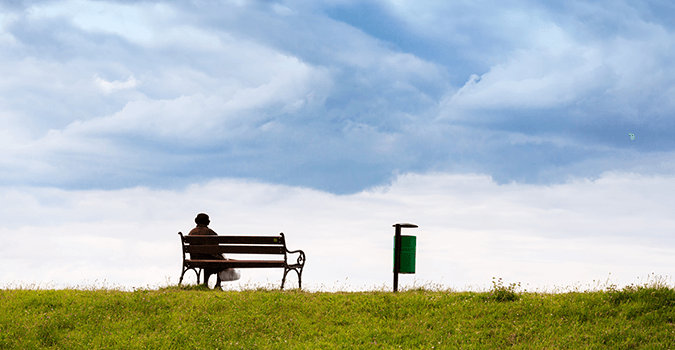July 23, 2024
LONELINESS – A Risk Factor for Dementia

By Ram Rao, Ph.D., Principal Research Scientist for Apollo Health
It was the Greek philosopher Aristotle who remarked that “Man is essentially a social animal by nature.” This statement bears some truth since, inherently, we are social beings, and from times immemorial, we have always existed in groups. We depend on and flourish in the company of others, influencing our interactions with one another and our environment. Social connections offer numerous advantages for survival. Simply put, there is comfort, strength, and safety in a group setting. Forming groups enabled our ancestors to hunt larger animals that would have been challenging for a single individual. Being in groups helped to fend off predators and protect each other and facilitated the growth of extended families, allowing them to support each other in parenting and raising children, thereby promoting survival. These behaviors provided such significant benefits that evolution naturally favored increased social connection over time. Anthropologists also believe that a species’ group size is the strongest predictor of an animal’s brain size. The bigger the social group, the bigger the brain. Due to the cognitive demands of managing various social interactions and relationships, humans developed larger brains. So, as our brains evolved to facilitate social connections, loneliness became an important social determinant of health.
So, what happens when we are socially disconnected or experience loneliness? Humans have evolved a signaling mechanism that lets us know when we are lonely or isolated. Loneliness is a signal emanating from the brain indicating that a social connection is not met and is characterized by a “craving” response that is very similar to food cravings following starvation or fasting. Although loneliness does not fall under the status of a ‘clinical disease,’ it is associated with a range of negative health outcomes, including sleep disturbances, depressive symptoms, stroke, cognitive impairment, and dementia. Studies suggest the health risks from loneliness are similar to smoking one dozen cigarettes a day. Loneliness is twice as harmful to physical and mental health as obesity and significantly increases the risk of premature mortality. So, just as we do not ignore the signs of hunger and thirst, similarly, we need to pay attention to the signs of loneliness.
How can loneliness have such a profound effect on the brain’s structure and function? While the exact mechanism is not clear, loneliness triggers a stress response (similar to the flight or fight response) and activates the immune system. When loneliness is experienced for long periods of time, it exacerbates the stress and inflammation response. Additionally, people who are lonely tend to have unhealthy habits, such as smoking, alcohol use, poor diet, or very little exercise, all of which impact brain function. Having little or no contact with the outside world can also make someone less likely to receive immediate medical care.
Research studies now clearly show that loneliness experienced during midlife appears to make people more susceptible to dementia and AD later in life. Using patient data from the Framingham Heart Study, researchers noted that persistent loneliness was associated with a higher risk of AD onset after adjusting for other confounding factors like age, sex, education, physical health, and genetic risk. Other similar studies showed that loneliness was associated with poor executive function — including decision-making, planning, cognitive flexibility, and attention control. Thus, all these studies point to mid-life loneliness as an independent, modifiable risk factor for dementia and AD.
These studies are a reminder that if we have to prioritize brain health, we cannot ignore the role of loneliness. So, how do you combat chronic loneliness? One of the most common recommendations is obviously to try to make new friends. Whether that is through group activities like adult education, sports, art classes, music, dance, or volunteer opportunities, the goal is to be with people. The other side of the equation is to use suitable behavioral therapies to address the root of the problem and understand why it is hard for a person to interact with others. Although the above-mentioned strategies might seem straightforward and easier said than done, it is crucial for everyone to recognize signs of loneliness early on. This awareness becomes particularly important as we age, as it can help increase the chances of delaying or even preventing cognitive decline.




